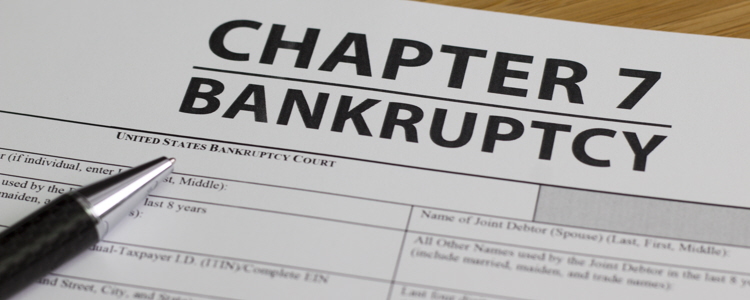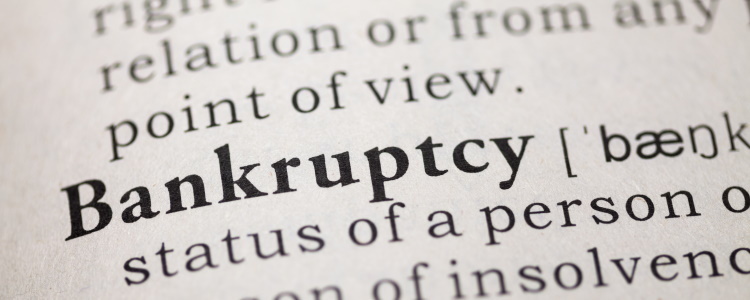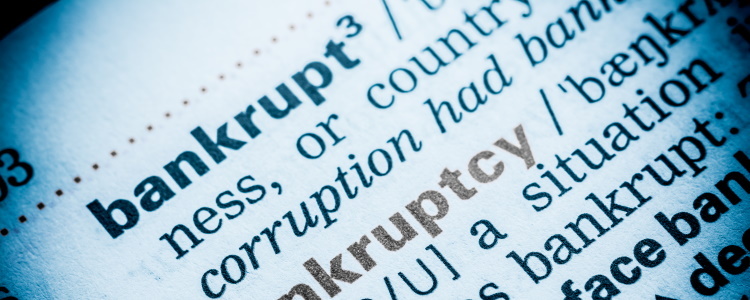Once your bankruptcy is discharged, you can start rebuilding your credit right away! A discharge means you successfully completed your bankruptcy, and you no longer need court permission to take on new debt – but that doesn’t mean you should take on a whole lot of debt all at once. Credit recovery after bankruptcy takes care and patience, and we're here to give you some pointers.
How Bankruptcy Impacts Your Credit
 Credit repair can be a long journey, but it may not be as long as you think. While bankruptcy can impact your credit score for a while, time heals your credit reports.
Credit repair can be a long journey, but it may not be as long as you think. While bankruptcy can impact your credit score for a while, time heals your credit reports.
If you filed Chapter 13 bankruptcy, the good news is that your bankruptcy is only listed on your credit reports for up to seven years, starting from the date that you file. Since Chapter 13 typically lasts either three or five years, you only have two to four years of it being reported on your credit reports if everything goes well. Once it falls off, that’s it – no more negative impact from the bankruptcy on your credit score.
Chapter 7, though, can remain on your credit report for up to ten years starting from the date you file. This type of bankruptcy is much shorter, generally only lasting four to six months. It’s known as the liquidation bankruptcy and your assets are sold to repay your creditors, unlike in Chapter 13 where you work with your trustee to repay your debts. For this reason, Chapter 7 sticks around on your credit reports longer.
However, even if your bankruptcy is set to impact your credit reports for a few more years, it doesn’t mean that its impact stays the same during that time. Negative marks lose some of their potency with each passing year, including bankruptcy. It could take a few years for your credit score to fully recover from bankruptcy, but there are some tips we can offer to start you off in the right direction.
Credit Repair Tips for Bankruptcy Borrowers
Regardless of what bankruptcy chapter you went through, one of the better ways to go about credit repair afterward is by understanding what makes up your credit score and taking on new credit responsibly.
The first step in repairing your credit is knowing what goes into your credit score:
- Payment history – 35%
- Amounts owed – 30%
- Length of credit history – 15%
- Credit mix – 10%
- New credit – 10%
This is what makes up your FICO credit score, the most commonly referenced model out there. Payment history is the big one to keep an eye on. By making all of your payments on time, you’re working toward a good credit score. However, you need to have reported credit if you want “credit” for those timely payments.
Accounts that usually report your timely payments to the credit bureaus automatically include:
- Auto loans
- Mortgages
- Secured or unsecured credit cards
- Credit-builder loans
- Some personal loans
Other things like utilities and even streaming services can be reported, but typically require the help of credit reporting services. Many credit reporting services are free of charge, though. Some things that you may be able to get on your credit reports include:
- Rent payments
- Subscriptions services (like Netflix)
- Water and/or electric bills
- Cable bills
- Phone bills
- Insurance premiums
If you have a monthly expense that isn’t being reported and you want those timely payments to count toward your credit score, check out our trusted partner for more information.
However, while not every on-time payment you make has the potential to be reported, missed or late payments can be reported by creditors even if that account isn’t actively listed. If you’ve been paying your auto insurance premiums but miss a few payments and that account gets sent to collections, it can show up on your credit reports as a negative account. Even if something isn’t normally reported, it still has the potential to harm your credit if you don’t stay current.
How Much Credit Should I Get After Bankruptcy?
There’s no set amount of credit that’s recommended for everyone. Everyone’s situation is unique, and how much credit you should take on after bankruptcy depends on how much you can personally handle. It’s a good idea to take on some reasonable credit after bankruptcy to start a positive repayment history, increase your credit variety, and show future lenders that you’re able to be financially responsible post-bankruptcy.
By only taking on new credit when you need it, you’re more likely to successfully repay your loans and maintain a positive repayment history. It’s not advisable to immediately take on multiple credit cards or installment loans soon after a bankruptcy discharge. Those hard pulls from applying can hurt your credit for up to 12 months – usually around five to 20 points per pull.
However, having a few credit cards with manageable monthly payments and an installment loan or two that’s reported on your credit reports can boost your payment history and credit mix, improving your overall credit score. The key is moderation and balancing your credit with what you can realistically keep up with.
Installment loans like car loans can be a great way to build a payment history and prove your ability to repay credit responsibly (aka your creditworthiness). And there are auto lenders able to assist bankruptcy borrowers.
Bankruptcy Car Loans
Taking on new credit after bankruptcy can be a challenge. Since bankruptcy can wreak havoc on your credit score, you may struggle to meet the credit score requirements of traditional auto lenders. To get into an auto loan and start repairing your credit after bankruptcy, working with a special finance dealership may increase your chances of approval.
Special finance dealerships are signed up with subprime lenders. They specialize in assisting borrowers in many unique credit circumstances, such as a past bankruptcy. Instead of using just your credit score to determine your creditworthiness, they examine your income, overall financial stability, and credit reports as a whole to get a better idea of you as a borrower.
Getting approved for a subprime auto loan starts with finding a special finance dealership – and we want to help. At Auto Credit Express, we’ve created a nationwide network of dealers that are signed up with subprime lenders, and we want to help you find one near you. Get started right now by completing our free auto loan request form, and we’ll look for a dealership in your area that’s signed up with bankruptcy auto lenders.
















